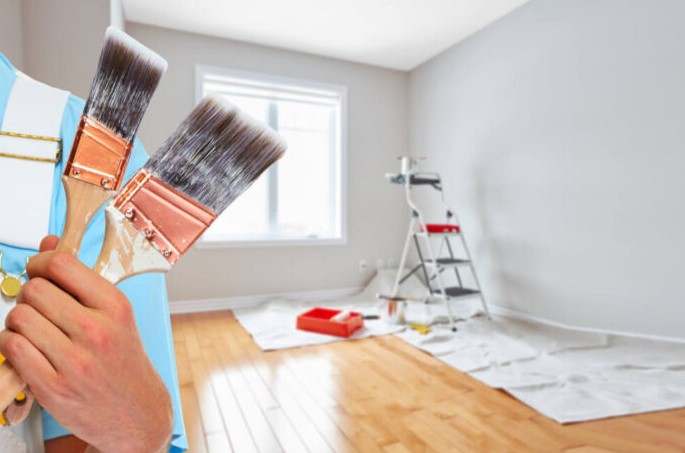Beginner’s Guide to DIY Wall Painting: Tips and Techniques
Introduction
Embarking on a DIY wall painting project allows you to infuse your personal touch into your living space. Whether you’re looking to refresh a room with a new color scheme or add a creative accent wall, the canvas of your walls becomes a gateway to expressing your style and transforming your environment.

Source : https://www.fotolog.com
Painting your own walls can be a creative and fulfilling endeavor that transforms the look and feel of your living space. Whether you’re aiming to refresh a room or add a personal touch, DIY wall painting allows you to unleash your artistic side while also saving on professional costs. This beginner’s guide will walk you through essential tips and techniques to ensure your DIY wall painting project is a success.
Preparation: The Key to Success
Before you start wielding your paintbrush, thorough preparation is crucial to achieving a polished finish. Here’s what you need to do:
1. Choose Your Paint: Opt for high-quality paints that are durable and have a good coverage. Choose between different finishes like matte, satin, eggshell, or semi-gloss, depending on the look you want to achieve and the area you’re painting.
2. Gather Supplies: Make a checklist of supplies you’ll need, including paint, brushes, rollers, painter’s tape, drop cloths, a ladder, a paint tray, and a stirring stick.
3. Prep the Area: Remove furniture and cover floors with drop cloths to protect them from accidental paint spills. Remove nails, screws, and outlet covers, and apply painter’s tape to edges, baseboards, and window frames to ensure clean lines.
4. Clean and Repair: Clean the walls to remove dirt, dust, and grease that could affect paint adhesion. Repair any cracks, holes, or imperfections using spackling compound, and sand the patched areas smooth.
5. Prime if Necessary: If you’re painting over a dark or unevenly colored wall, consider using a primer to ensure better paint coverage and a consistent color result.
Choosing Colors and Patterns
Selecting the right colors and patterns for your walls is a creative process that can dramatically impact the overall look of your space. Here are some guidelines:
1. Consider the Space: Think about the size and function of the room. Lighter colors can make a room feel more spacious, while darker colors can add coziness. Bold accent walls can create a focal point, but be mindful of how they interact with the rest of the room’s decor.
2. Sample Swatches: Purchase small paint samples and apply them to a small section of the wall to see how they look under different lighting conditions. Observing how the color changes throughout the day can help you make an informed decision.
3. Harmonize with Decor: Coordinate your chosen color with the existing furniture, textiles, and decor items in the room. A cohesive color palette ties the room together and creates a harmonious atmosphere.
4. Experiment with Techniques: Beyond a single solid color, you can explore various painting techniques like color blocking, stenciling, ombre, or even creating a faux finish like distressed or textured effects.
Techniques for a Flawless Finish
When it’s time to pick up the paintbrush, these techniques will ensure a professional-looking finish:
1. Cutting In: Before using a roller, “cut in” with a brush along the edges of the wall, where the roller can’t reach easily. This creates clean lines and prevents the need to tape off everything.
2. Rolling: Load the roller with paint and apply in a “W” or “M” pattern to evenly distribute the paint. Start from the top and work your way down in sections, slightly overlapping each pass.
3. Maintain Wet Edges: To avoid visible lines where wet paint meets dry paint, maintain a wet edge by working in small sections and keeping a wet roller.
4. Blend Colors: If you’re working on a larger wall or using multiple cans of paint, mix them together in a larger container to ensure a consistent color across the entire surface.
Tips for Success
1. Patience is Key: Rushing through the process can lead to mistakes. Take your time, especially during the preparation and cutting-in stages.
2. Avoid Overloading the Brush or Roller: Excess paint can lead to drips and uneven application. Tap off excess paint before applying it to the wall.
3. Test the Color: Paint a small section of the wall and observe it under different lighting conditions before committing to the entire room.
4. Protect Yourself: Wear old clothes, gloves, and protective eyewear to prevent paint splatters from ruining your clothing and getting in your eyes.
5. Ventilate the Room: Ensure proper ventilation by opening windows or using fans, especially if you’re using paint with strong odors.
Conclusion
Embarking on a DIY wall painting project can be both rewarding and enjoyable. With careful preparation, color selection, and mastering a few essential techniques, you can achieve professional-looking results that enhance the ambiance of your living spaces. Remember, practice makes perfect, so don’t be discouraged by any initial hiccups. As you gain experience, you’ll find that DIY wall painting becomes a creative outlet that allows you to express your unique style throughout your home.





